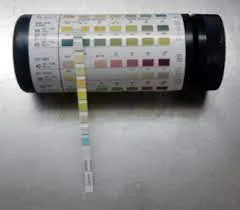Oct . 18, 2024 21:22 Back to list
Exploring the Best Rapid Diagnostic Tests for Malaria Detection and Management Strategies
Best RDTs for Malaria A Comprehensive Overview
Malaria continues to be a major global health challenge, particularly in tropical and subtropical regions. Rapid Diagnostic Tests (RDTs) have emerged as a vital tool in the fight against this infectious disease, allowing for timely and accurate diagnosis, which is crucial for effective treatment and control. As malaria parasites are known for their rapid replication and potential to cause severe illness, the timely detection of the disease can significantly reduce morbidity and mortality. This article presents an overview of the best RDTs available for malaria diagnosis, highlighting their features, benefits, and limitations.
Best RDTs for Malaria A Comprehensive Overview
One of the leading manufacturers of malaria RDTs is SD Biosensor, which produces tests with innovative technology that enhances accuracy and reduces false positives and negatives. The SD Bioline Malaria Ag Pf/Pan test has garnered attention due to its reliability and rapid results, often providing a diagnosis within 15 minutes. Its dual-target capability enables the detection of both Plasmodium falciparum and Pan-specific antigens, making it suitable for a broader range of malaria cases.
best rdt malaria

Another standout product is the CareStart Malaria HRP2/pLDH RDT developed by Access Bio. This test targets both HRP2, a specific antigen for P. falciparum, and pLDH, which can detect non-falciparum malaria species. The test's versatility makes it an excellent choice in regions where multiple malaria species coexist. Furthermore, its user-friendly design helps improve usability in low-resource settings, facilitating widespread adoption.
Despite the advancements in RDT technology, challenges remain. One significant issue is the potential for false-negative results in cases of low parasitemia, especially in individuals with partially immunity from previous infections or those receiving anti-malarial drugs. Healthcare providers must be aware of these limitations and consider complementary diagnostic methods, such as microscopy, especially in high-stakes situations.
Another concern is the quality control of RDTs, as inconsistent test performance can arise from poor storage conditions, degradation of reagents, or batch variability. Regulatory agencies, such as the World Health Organization (WHO), emphasize the importance of using WHO-prequalified RDTs to ensure that healthcare providers have access to reliable testing options.
In conclusion, Rapid Diagnostic Tests represent a crucial advancement in the fight against malaria. The emergence of high-quality RDTs, such as those from SD Biosensor and Access Bio, has improved diagnosis in resource-limited settings, driving better treatment outcomes. However, awareness of their limitations is essential for optimal use. To further reduce the burden of malaria, continuous efforts in research, development, and quality control of RDTs will be pivotal. Ultimately, the integration of robust diagnostic practices with effective treatment strategies may hold the key to controlling and potentially eradicating malaria in the future.
-
Dengue NS1 Rapid Diagnostic Test Kit
NewsMar.07,2025
-
Dengue NS1 Rapid Diagnostic Test Kit
NewsMar.07,2025
-
Dengue NS1 Rapid Diagnostic Test Kit
NewsMar.07,2025
-
Transferrin Rapid Test Cassette Tumor Marker TF Card
NewsMar.07,2025
-
Malaria Pf Pan Rapid Diagnostic Test Kit
NewsMar.07,2025
-
malaria pf / pan ag rapid test
NewsMar.07,2025

